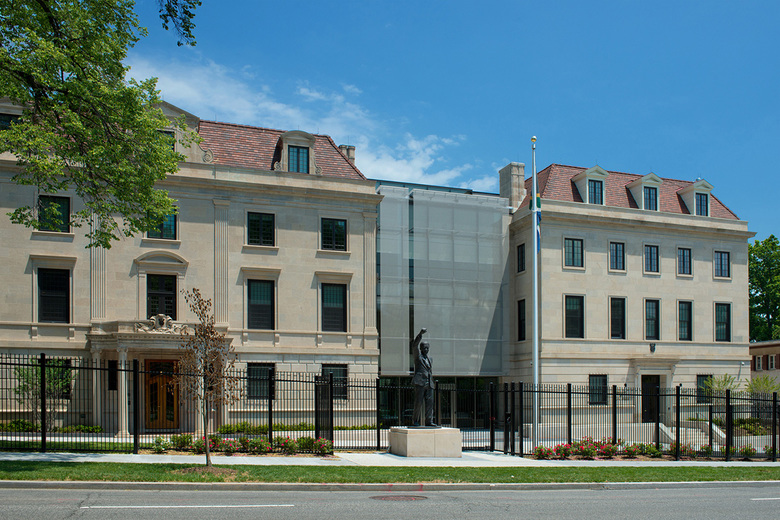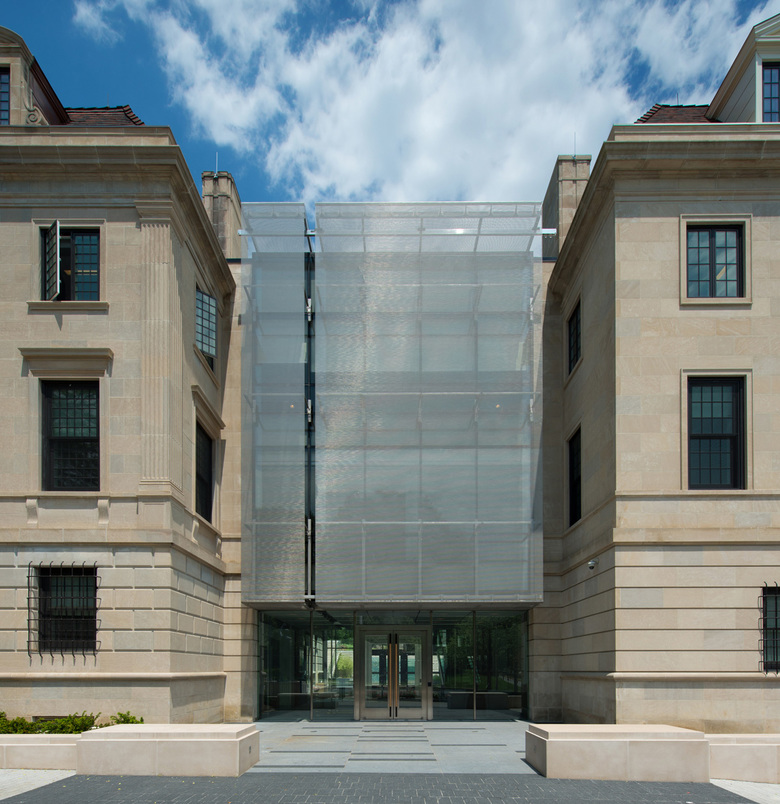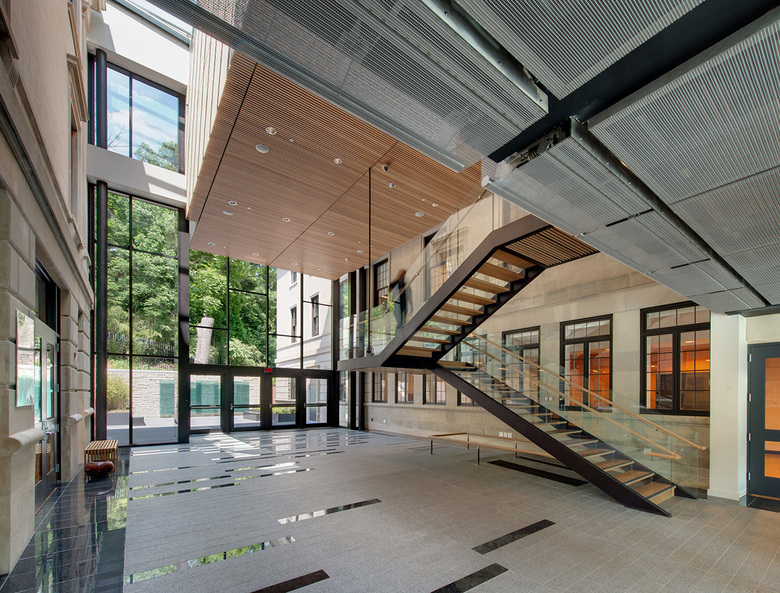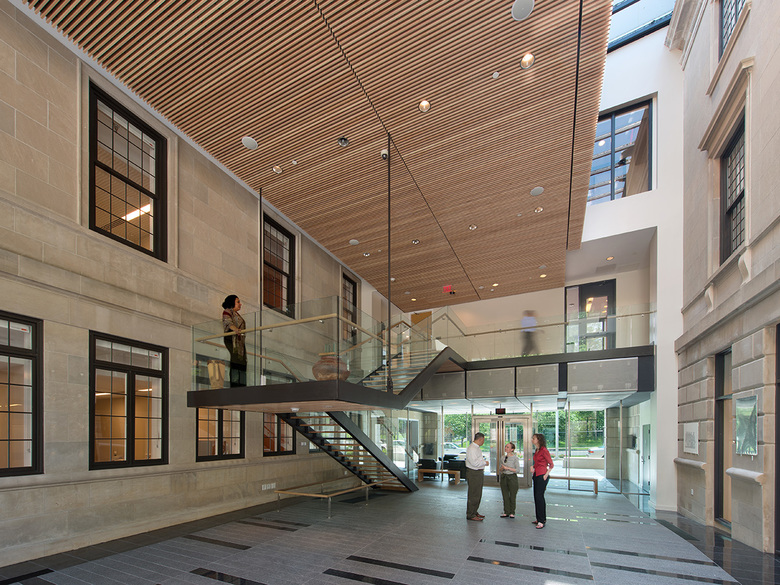South African Embassy's Mesh Infill
As part of Davis Brody Bond's modernization of the Embassy of South Africa, the architects inserted a glass addition between the Dutch Cape-style buildings, using Cambridge Architectural mesh to shade the interior and express a "New South Africa."
Consisting of the Ambassador’s Residence and the Chancery, built in 1936 and 1964 respectively, the Embassy faces Massachusetts Avenue NW, which is informally called "Embassy Row" in this stretch of Washington, D.C., due to the great number of embassies that line the diagonal street. The two buildings were linked by a breezeway at the second and third floors, its architecture following the style of its neighbors. Yet when it came time for Davis Brody Bond to carry out a major overhaul of the Embassy – providing for additional chancery functions, replacing existing building systems, and improving life safety measures – the tactic was different, more contemporary. The new infill piece served a few functions: adding more space, creating a new entrance, and literally and figuratively weaving together the old and new. The latter found material expression in the stainless steel mesh.
According to Burt Jackson of Davis Brody Bond's Washington, D.C. office, where he worked on the project with Director Robert Anderson, the idea of weaving related to traditional South African baskets and thatched roofs, but it finds a contemporary update in the woven stainless steel mesh that Cambridge Architectural is known for. Specifically, the specified mesh is Cambridge's triangular Shade pattern finished in T316 stainless and secured with a custom version of their Scroll attachment system. While it looks two-dimensional, the mesh wraps the south facade in a three-dimensional manner. It starts behind the parapet at the green roof and projects out in front of the glass wall to allow for a custom window washing system. Hung in tension from the top, the mesh then turns inside to become a ceiling and soffit that turns up again, pointing toward a ceiling made of red oak woods slats.
As Jackson explained to me, the project was not without its complications. Although a small project (the infill added approximately 4,200sf / 390sm), a number of factors contributed to making it a lengthy process: although not in a historic district, the project was at the mercy of the historical review board; the remoteness of the client drew out the review/approval process; and unforeseen conditions arose during construction, which was handled by Turner Construction. And partway through the project Nelson Mandela died, necessitating an appropriate event at the Embassy and a small delay in construction as work was stopped and the site was cleaned for press and VIPs. Completed in mid-2014, the result reveals a thoughtful process where the old buildings were respected and the new piece quietly asserts something different and forward-looking.






